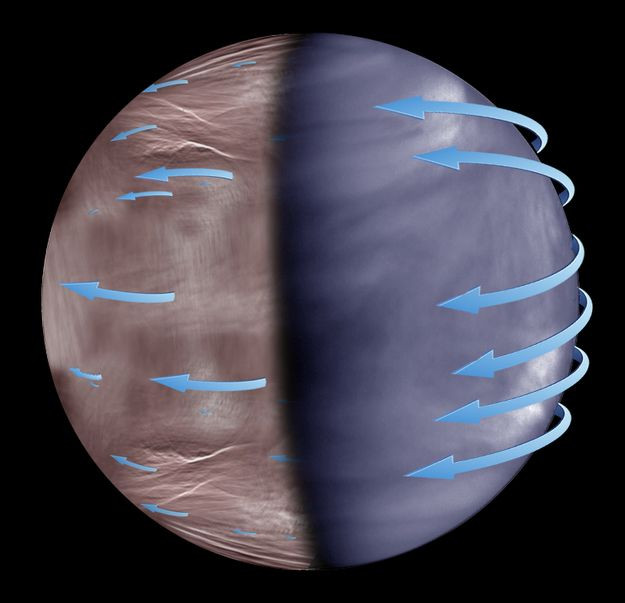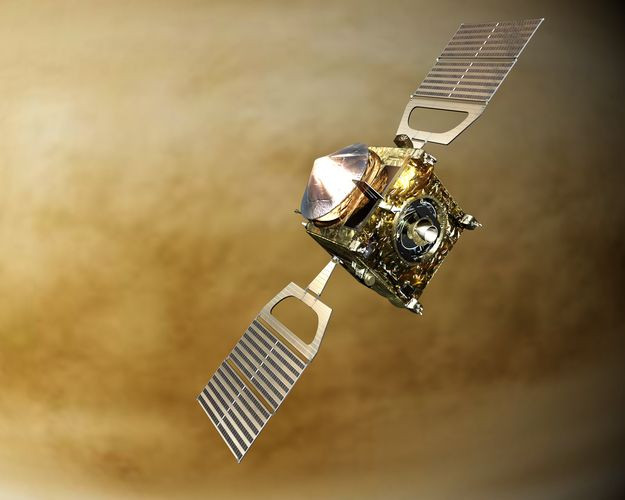Dark Side Of Venus: Planet Has Bizarre Clouds, Nighttime Weather

Spending a night on Venus is a lot different from visiting in the daytime. Research into the weather on the planet’s night side has revealed new kinds of clouds as well as atmospheric conditions that are influenced by features down below on the surface.
Scientists have been trying to unlock the puzzle of the atmosphere above Venus, where wind blows about 60 times faster than the planet rotates and moves around the clouds with it, the European Space Agency explained. The process is called super-rotation but the exact mechanisms behind it have been unclear, as the night side of the planet has not been studied as much as the day side.
“We’ve spent decades studying these super-rotating winds by tracking how the upper clouds move on Venus’ dayside — these are clearly visible in images acquired in ultraviolet light,” Javier Peralta, from the Japan Aerospace Exploration Agency, said in the ESA statement. “However, our models of Venus remain unable to reproduce this super-rotation, which clearly indicates that we might be missing some pieces of this puzzle. We focused on the night side because it had been poorly explored.”
If the scientists had been talking about Earth, where night and day are separated by only 12 hours, it would sound strange that there could be such a stark difference between the atmosphere on the day and night sides, or that one side could remain so unexplored compared to the other. But Venus rotates so slowly that it completes an orbit around the sun faster — its day is longer than its year. In fact, Earth can complete a rotation more than 200 times in the same period it takes for Venus to rotate once.
Previously, “we can see the upper clouds on the planet’s night side via their thermal emission, but it’s been difficult to observe them properly because the contrast in our infrared images was too low to pick up enough detail,” Peralta said.

Using data from the spacecraft Venus Express, a team of researchers analyzed the clouds of the dark half in the infrared wavelengths of the light spectrum.
Although models currently predict that Venus’ night side behaves in mostly the same way as its day side, the new research refutes that. It shows “the super-rotation seems to be more irregular and chaotic on the night side,” according to the ESA.
The upper clouds there look different, a study in the journal Nature Astronomy explains: They are big and irregular and they have thread-shaped patterns. They also contain waves that rise from lower in the atmosphere and are independent from the planet’s rotation.

“These waves are concentrated over steep, mountainous areas of Venus; this suggests that the planet’s topography is affecting what happens way up above in the clouds,” researcher Agustin Sánchez-Lavega said in the statement.
A similar connection between stationary waves and topography has been made on the day side of Venus.
“This is the first time we’ve been able to characterise how the atmosphere circulates on the night side of Venus on a global scale,” Peralta said.
According to the study, there will be more observations of Venus’ night side in the future, with the Japanese space agency’s Akatsuki spacecraft currently in orbit around that planet. The researchers are particularly looking to better understand the wave features in the atmosphere.
“This study challenges our current understanding of climate modelling and, specifically, the super-rotation, which is a key phenomenon seen at Venus,” Venus Express scientist Håkan Svedhem said in the ESA statement.

© Copyright IBTimes 2024. All rights reserved.





















